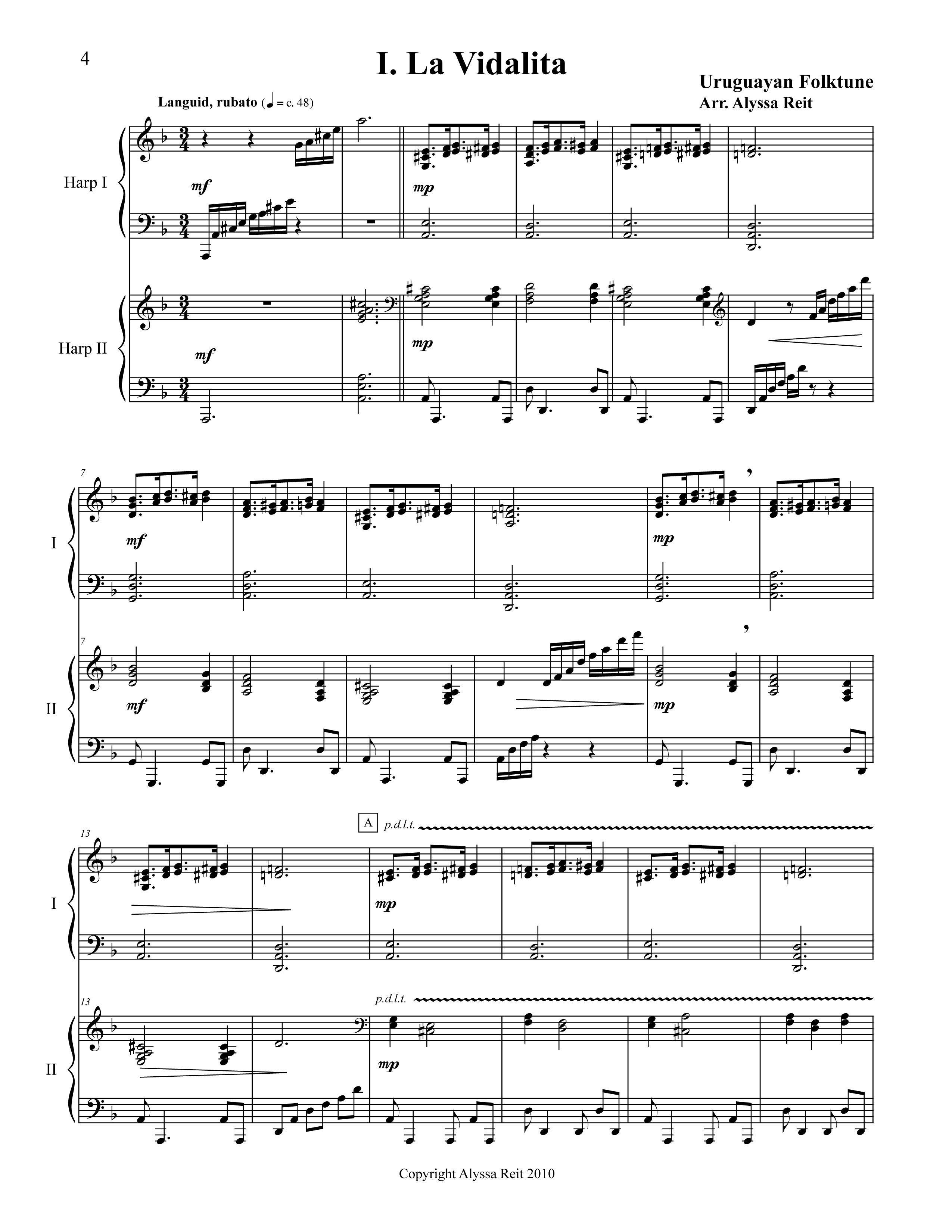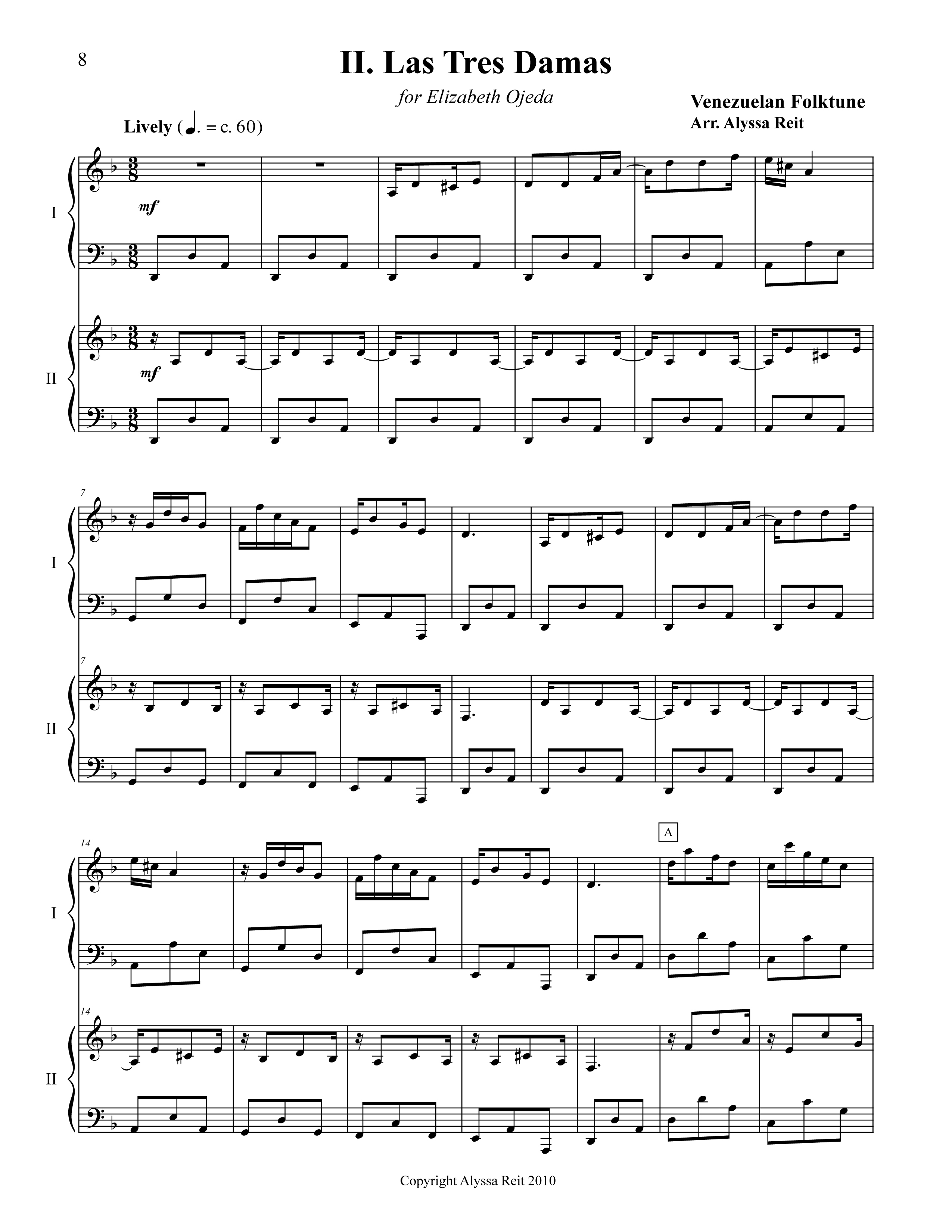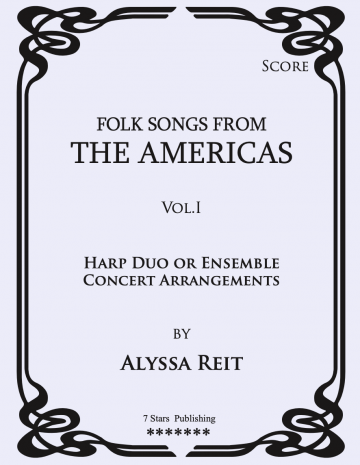Folk Songs from the Americas Vol. 1 (harp duo version)
$25.00
Alyssa Reit’s Folk Songs from the Americas collection includes two concert arrangements for 2 pedal harps. (Reit’s arrangement of this collection for flute and harp can found here and her arrangement of this collection for harp, flute, and viola trio can be found here.)
Included are:
“La Vidalita” (Uruguayan folk tune)
“Las Tres Damas” (Paraguayan folk tune)
This collection is a PDF download available for $25.00.
(Includes score and 2 parts.)
Length: score is 16 pgs; parts are 12 pgs.
(Note: The Harp 1 part to Folk Songs from the Americas, Vol. 1 was revised in August, 2014. If you purchased this piece prior to that date, please email us for a complimentary revised PDF download of the Harp 1 part and Score.)








Reviews
There are no reviews yet.